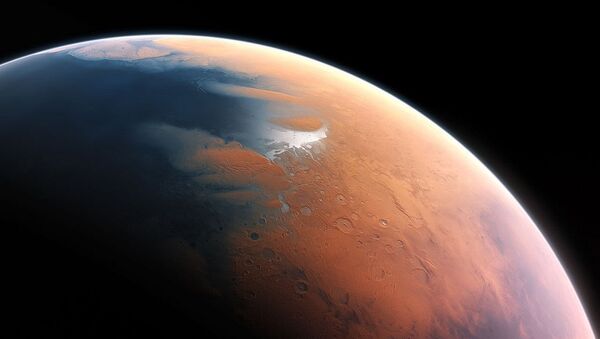スプートニク日本
「バクテリアは判明したところ、1割が(非常に毒性の強い化学物質)過塩素酸塩からなる非常に濃い『塩水』のなかでさえ成長することができる。火星では過塩素酸塩の割合が10分の1だ」と独ベルリン工科大学のヤコブ・ハインツ氏は述べた。
実験で研究チームは、こうした劣悪な条件で、地球上のバクテリアのうち少なくとも1種が生き残ることができると明らかにした。それは、永久凍土で見つかった「Planococcus halocryophilus」である。
興味深いことに、彼らがこうした環境で生存できるのは、摂氏マイナス15〜25度の低温である場合のみ。
研究チームが指摘するところ、極限状態でのこうした生存率は、永久凍土が火星の塩水の川に似ていることを関係していると指定。永久凍土も含む水分は少ない一方で塩分が多く、定期的に凍る。
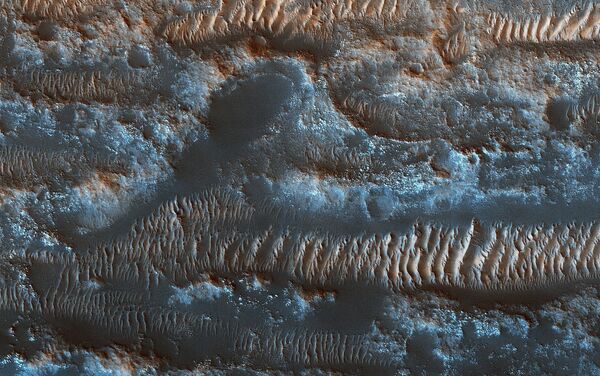
NASA's Mars Reconnaissance Orbiter shows bright ripples line the topography in this region, formed within a past climate. Dark dunes and sand streaks (composed of basaltic sand) have moved and filled lower areas, pushed by more recent winds from the top towards the bottom of this image.
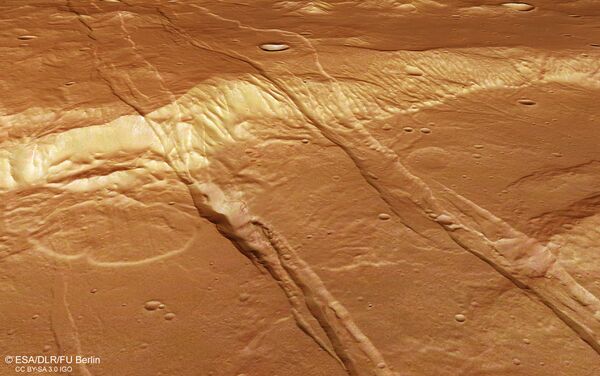
Трещины и ямки в Южном полушарии Марса.
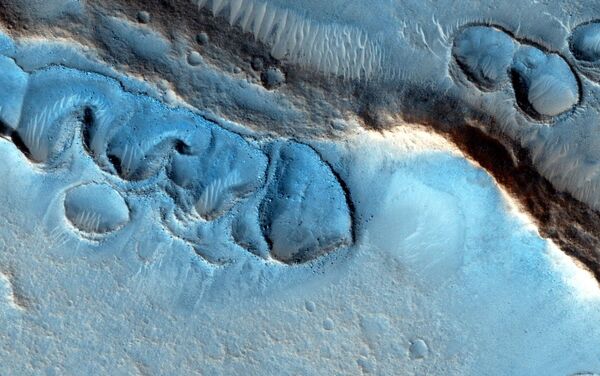
This image covers many shallow irregular pits with raised rims, concentrated along ridges and other topographic features. How did these odd features form?
One idea is that they could be from sublimation of shallow lenses of nearly pure ice, but why do the pits have raised rims? They can't be impact craters with such fortuitous alignment and irregular margins. They aren't wind-blown deposits because there are many boulders, too big to be moved by the wind. There are younger wind-blown drifts on top of the pits, and there's no clear connection to volcanism.
One idea is that they could be from sublimation of shallow lenses of nearly pure ice, but why do the pits have raised rims? They can't be impact craters with such fortuitous alignment and irregular margins. They aren't wind-blown deposits because there are many boulders, too big to be moved by the wind. There are younger wind-blown drifts on top of the pits, and there's no clear connection to volcanism.
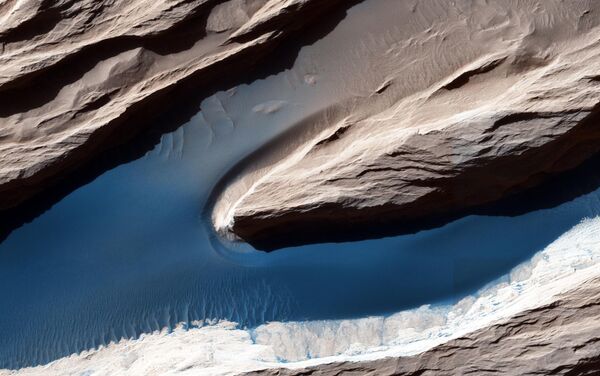
Wind is one of the most active forces shaping Mars' surface in today's climate. The wind has carved the features we call "yardangs," one of many in this scene, and deposited sand on the floor of shallow channels between them. On the sand, the wind forms ripples and small dunes. In Mars' thin atmosphere, light is not scattered much, so the shadows cast by the yardangs are sharp and dark. (Note: The cutout is not map-projected, so approximate north is down). The University of Arizona, Tucson, operates HiRISE, which was built by Ball Aerospace & Technologies Corp., Boulder, Colo. NASA's Jet Propulsion Laboratory, a division of the California Institute of Technology in Pasadena, manages the Mars Reconnaissance Orbiter Project for NASA's Science Mission Directorate, Washington.
NASA's Mars Reconnaissance Orbiter shows bright ripples line the topography in this region, formed within a past climate. Dark dunes and sand streaks (composed of basaltic sand) have moved and filled lower areas, pushed by more recent winds from the top towards the bottom of this image.
Трещины и ямки в Южном полушарии Марса.
This image covers many shallow irregular pits with raised rims, concentrated along ridges and other topographic features. How did these odd features form?
One idea is that they could be from sublimation of shallow lenses of nearly pure ice, but why do the pits have raised rims? They can't be impact craters with such fortuitous alignment and irregular margins. They aren't wind-blown deposits because there are many boulders, too big to be moved by the wind. There are younger wind-blown drifts on top of the pits, and there's no clear connection to volcanism.
One idea is that they could be from sublimation of shallow lenses of nearly pure ice, but why do the pits have raised rims? They can't be impact craters with such fortuitous alignment and irregular margins. They aren't wind-blown deposits because there are many boulders, too big to be moved by the wind. There are younger wind-blown drifts on top of the pits, and there's no clear connection to volcanism.
Wind is one of the most active forces shaping Mars' surface in today's climate. The wind has carved the features we call "yardangs," one of many in this scene, and deposited sand on the floor of shallow channels between them. On the sand, the wind forms ripples and small dunes. In Mars' thin atmosphere, light is not scattered much, so the shadows cast by the yardangs are sharp and dark. (Note: The cutout is not map-projected, so approximate north is down). The University of Arizona, Tucson, operates HiRISE, which was built by Ball Aerospace & Technologies Corp., Boulder, Colo. NASA's Jet Propulsion Laboratory, a division of the California Institute of Technology in Pasadena, manages the Mars Reconnaissance Orbiter Project for NASA's Science Mission Directorate, Washington.

